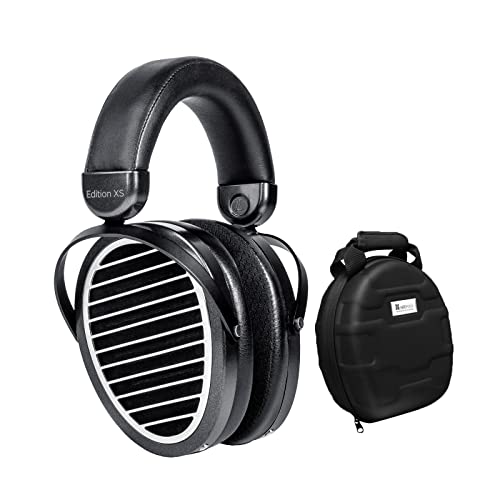Planar Magnetic Vs Dynamic Driver Headphones
The majority of headphones and IEMs use a dynamic driver that uses cones to move back and forth, creating sound waves. Planar magnetic headphones feature a flat diaphragm. They are more expensive, but they offer better sound and clarity.
They might not be suitable as portable devices since they require more power. The 'punch,' or slam, is a result of this. For some audiophiles, they are a step down.
The Basics
Planar Magnetic Drivers have become the standard for headphones due to their crisp sound and immersive quality. Although they're not as popular as dynamic drivers, you can still discover big-name companies like Audeze and Oppo which sell the top Planar Magnetic Headphones. Planar Magnetic Headphones are a little different from traditional dynamic driver headphones since they don't utilize the use of a moving voice coil to create vibrations in the diaphragm. Instead, the charged part of the driver is spread across the flat surface of the diaphragm, which allows for a more uniform motion.
A simpler mechanism makes the planar magnetic driver more efficient in producing soundwaves. This can translate into better distortion levels, a more precise response to the transients of music and an overall more natural soundstage.
Although there are plenty of benefits to choosing a pair of headphones with a planar magnetic drive, the technology does come with a few drawbacks that you must be aware of. First, you must be aware of the fact that these kinds of headphones typically leak more sound than regular open-back dynamic models. The diaphragm is flat on headphones that are planar will push sound in both directions. This means that sound waves will escape from the earcups into your surroundings. This is something you should take into consideration if you'll use your headphones in public or at work.
Planar magnetic headphones require more power than other models to fully realize their potential. The large, thin diaphragms require more energy to move in a uniform manner which is why they are heavier and more bulky. This is a disadvantage if you prefer to keep your headphones portable and lightweight.

Additionally, planar magnetic headphones may not have the slam and punch many listeners prefer. This is because the diaphragm isn't vibrating in the same way as traditional dynamic headphones and isn't able to be 'plucked', as some listeners might wish. This is not an opinion that is widely accepted. There are a few high-end planar magnet headphones (like the HiFiMAN Sundara) that deliver a punchy image and excellent image distribution.
If you are willing to overlook the problems and are searching for a pair of headphones that has a unique soundstage with unparalleled clarity, planar magnetic headphones may be worth a look. Be sure to consider the extra cost and power requirements, as well as the size and weight of your headphones before making a choice. There are a variety of excellent planar magnetic headphone s on the market at a reasonable price. This includes the popular HiFiMAN Sundara. This gives you a taste of what these headphones can offer without costing you a fortune.
Benefits
There are many excellent headphones that feature dynamic drivers. However, the best headphones in a variety of price points use the planar magnetic technology. These headphones are usually more expensive than their counterparts with dynamic drivers, but also offer superior performance, with a wide soundstage and an immersive listening experience.
To create vibrations in the diaphragm, planar magnetic headphones use two or more magnets that are suspended close to the flat surface of the driver and a conductor trace on the diaphragm. When electrical impulses travel through these wires, they induce a magnetic field that reacts with the magnets, causing them to vibrate. The force generated is evenly distributed across the entire surface of diaphragm. This doesn't cause distortion as dynamic headphones do.
They have a wider soundstage as well as a more stable transient response than dynamic models. They can also handle audio changes with greater precision. They also have lower resonance and a flatter frequency response, which makes them more precise in the bass range than dynamic headphones and offering a fuller, deeper sound.
Because they are more precise they have an authentic and clear sound quality that draws in audiophiles. This is evident in the clarity of their sound and the way they reproduce the stereo balance and location of instruments. This is especially true for closed-back models such as the HiFiMAN Sundara that provide an even and spacious soundstage.
Moreover, these headphones are generally less prone to breakup, which occurs when the forces that act on the diaphragm degrade its structural integrity and cause various points on the surface to be out of the sync. This could be due to the design or manufacturing defect. This is among the reasons planar headphones are considered the premium alternative.
However, this type of headphone has some disadvantages. It requires a significant amount of power to drive it. They are often bulky and heavy, which makes them less portable than their dynamic counterparts. They also tend to release more sound, which means that you'll need to be in a quiet area to listen without causing disturbance to others around you. The latest models have improved seals and noise isolation to alleviate this issue. It's difficult to say definitively whether the planar magnetic or dynamic ones are better. It all depends on your priorities and what you value in your audio experience.
